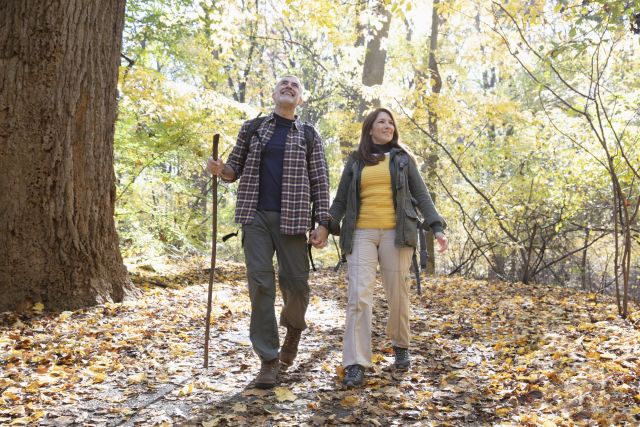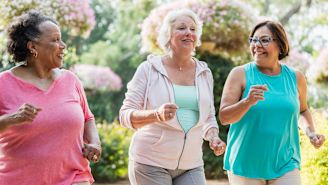Are you concerned about staying mobile and independent well into your golden years? Try this strategy: Go for a walk.
A 2014 study published in JAMA examined the effects of a daily walking plan, along with balance and strength exercises, in a group of 1,635 sedentary adults 70- to 89-years-old for about two-and-a-half years. One group of participants engaged in a structured physical activity program that included walking for 150 minutes a week, while another group went to health workshops and did light stretching and flexibility exercises.
At the end of the study, researchers found participants in the walking group were 18 percent less likely to experience major mobility disability (unable to walk 400 meters within 15 minutes without sitting or assistance) compared to the workshop group. They were also 28 percent less likely to experience persistent mobility disability (back-to-back major mobility disability assessments).
And, more recent research supports these findings.
In a 2020 study published in BMC Geriatrics, researchers monitored step count and physical activity in 255 adults aged 60 and older for a five-day period. Then, they recorded the occurrence of falls over six months. The results: Older adults who walked less than 5,000 steps a day were 2.62 times more likely to fall than those who walked at least 5,000 steps a day.
Similarly, a 2019 study published in JAMA found that a home-based exercise program for older adults, which included different walking exercises, also reduced the number of falls in a 12-month period. Similar to the 2020 study, participants who didn’t walk reported an average of 2.1 falls per year while people in the walking group reported 1.4 falls per year.
Walking may also help lower the risk of heart disease in older adults. A 2018 review published in the British Journal of Sports Medicine analyzed 37 randomized clinical trials involving various walking programs for older adults. It found the interventions had a positive impact on seven heart disease risk factors, including body mass index (BMI), body fat, blood pressure, and blood sugar levels.
How to start a walking program
Orthopedic surgeon Vonda Wright, MD, says, "Our bodies are designed to move and if we continue to do so, we’ll preserve that ability for a long time." If walking is a problem because of achy knees or hips, she suggests starting off in water. "We don’t only have to walk on land,” Dr. Wright says. “That’s a way to get around the aches and pain of aging to get our mobility back."
For those who can walk without the aches, begin by going "one mailbox at a time," she says. "Once you reach the first mailbox, tell yourself you’re going to the next one. You’re much more likely to succeed than if you set a huge goal."
And if you really want to maintain mobility, take it a step further: Gradually pick up the pace and walk farther. If you’re walking on a track—something Wright recommends—start up the stairs on one side of the stadium and then go down.
"Simple walking is good, don’t get me wrong," says Wright. "But our bodies are such adaptation machines that if that’s all you do, it’s not going to mobilize your body the way your body is capable of. Even at that age. Challenge your body. We’re designed to move. You’re not freaking your body out by doing it."







